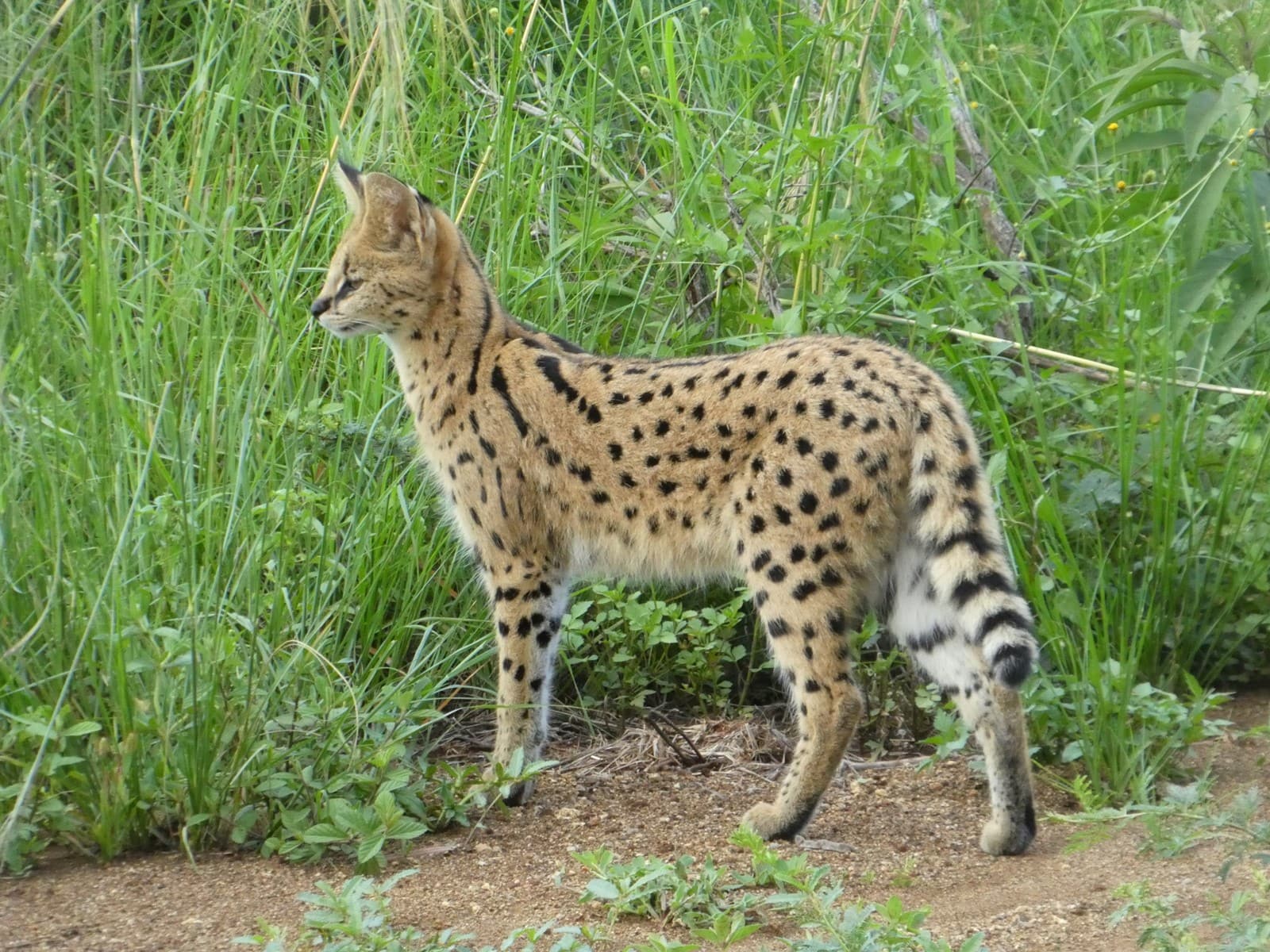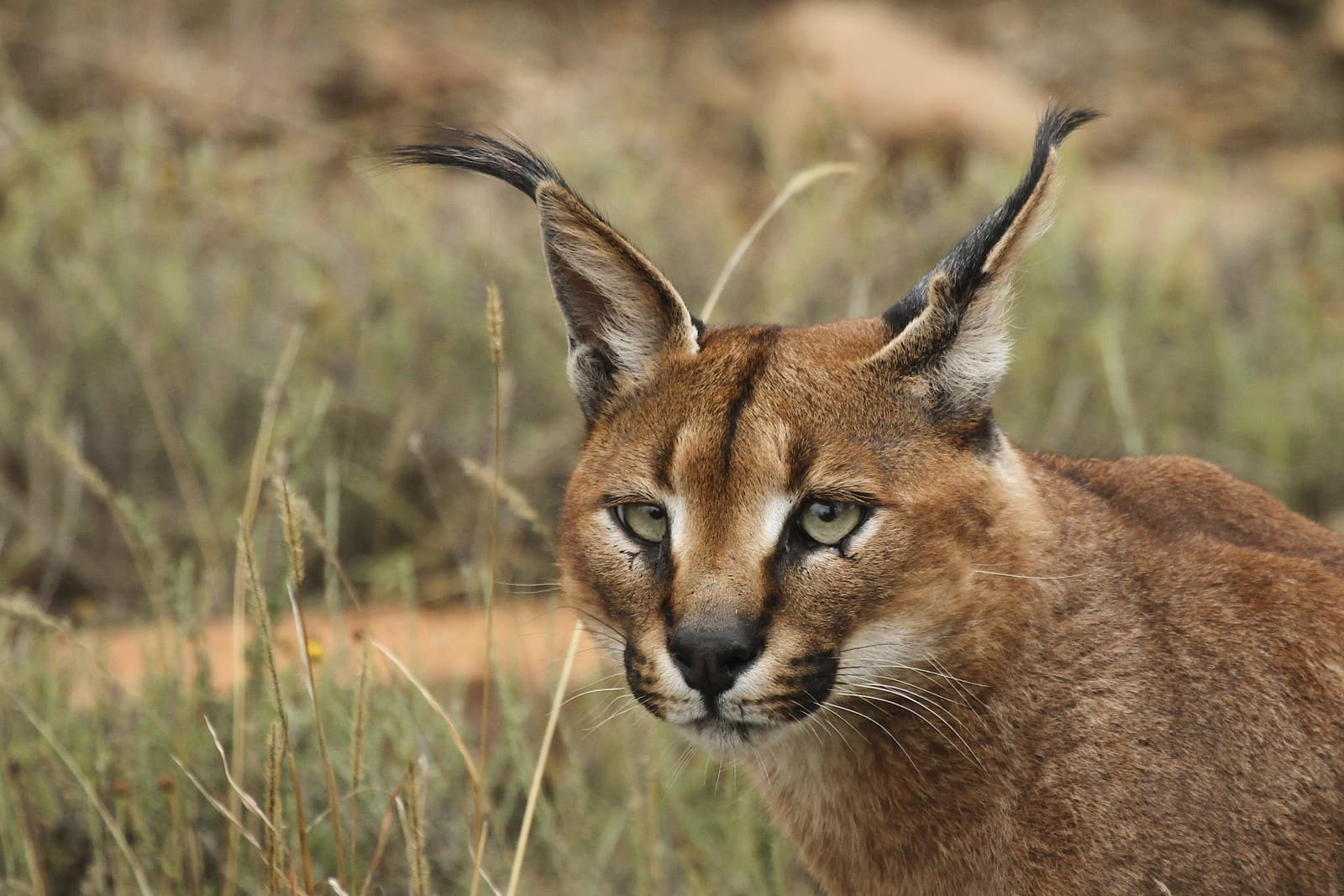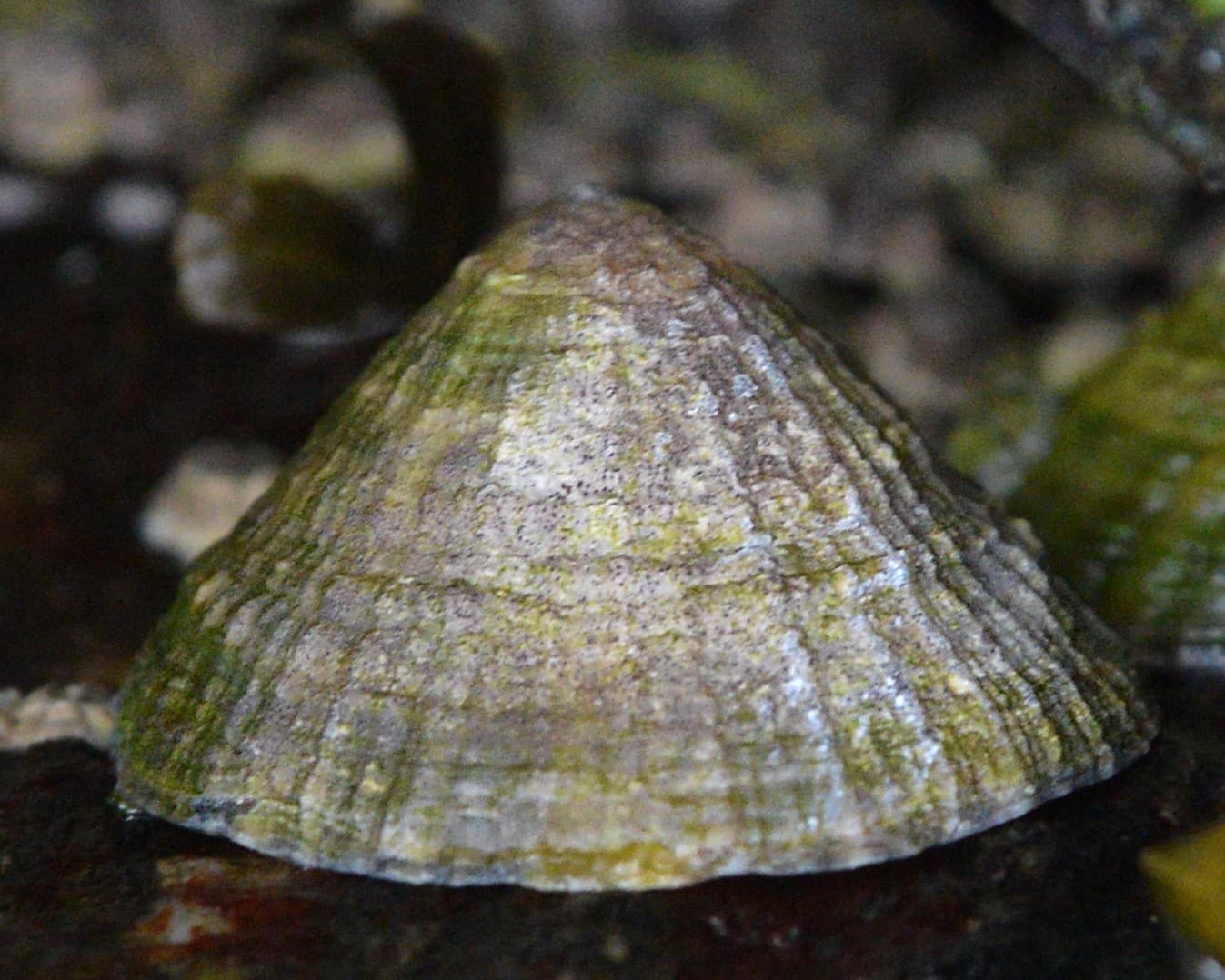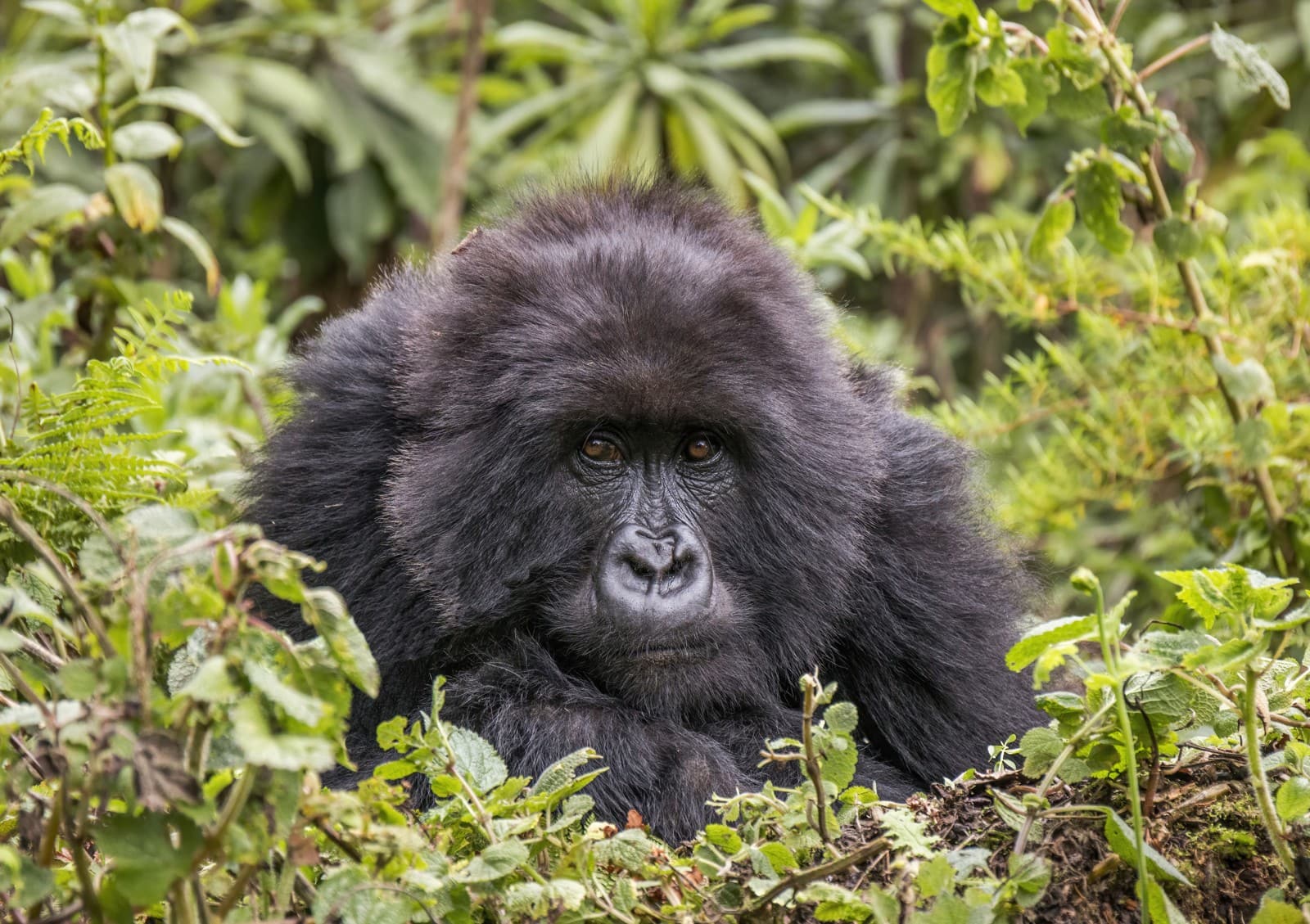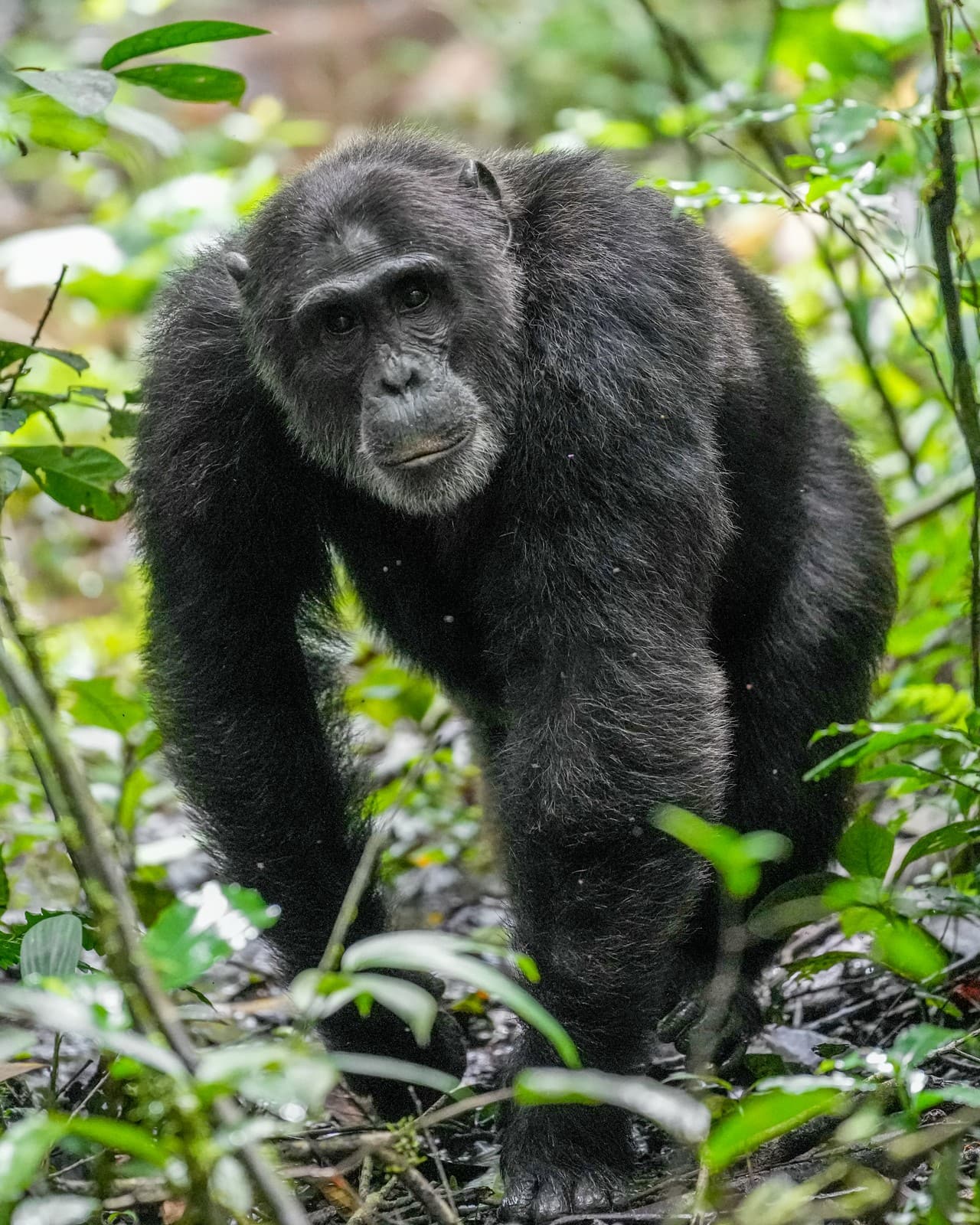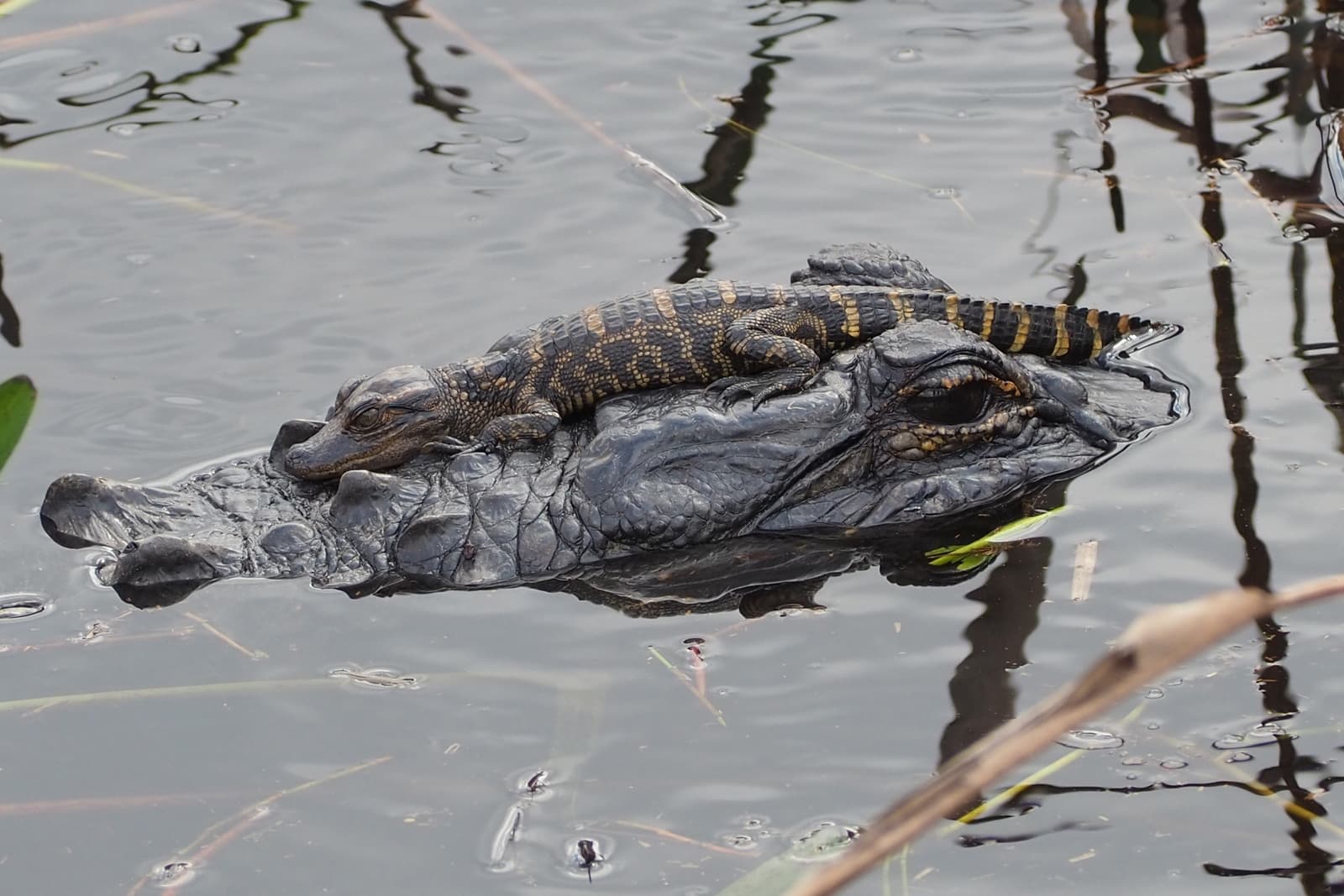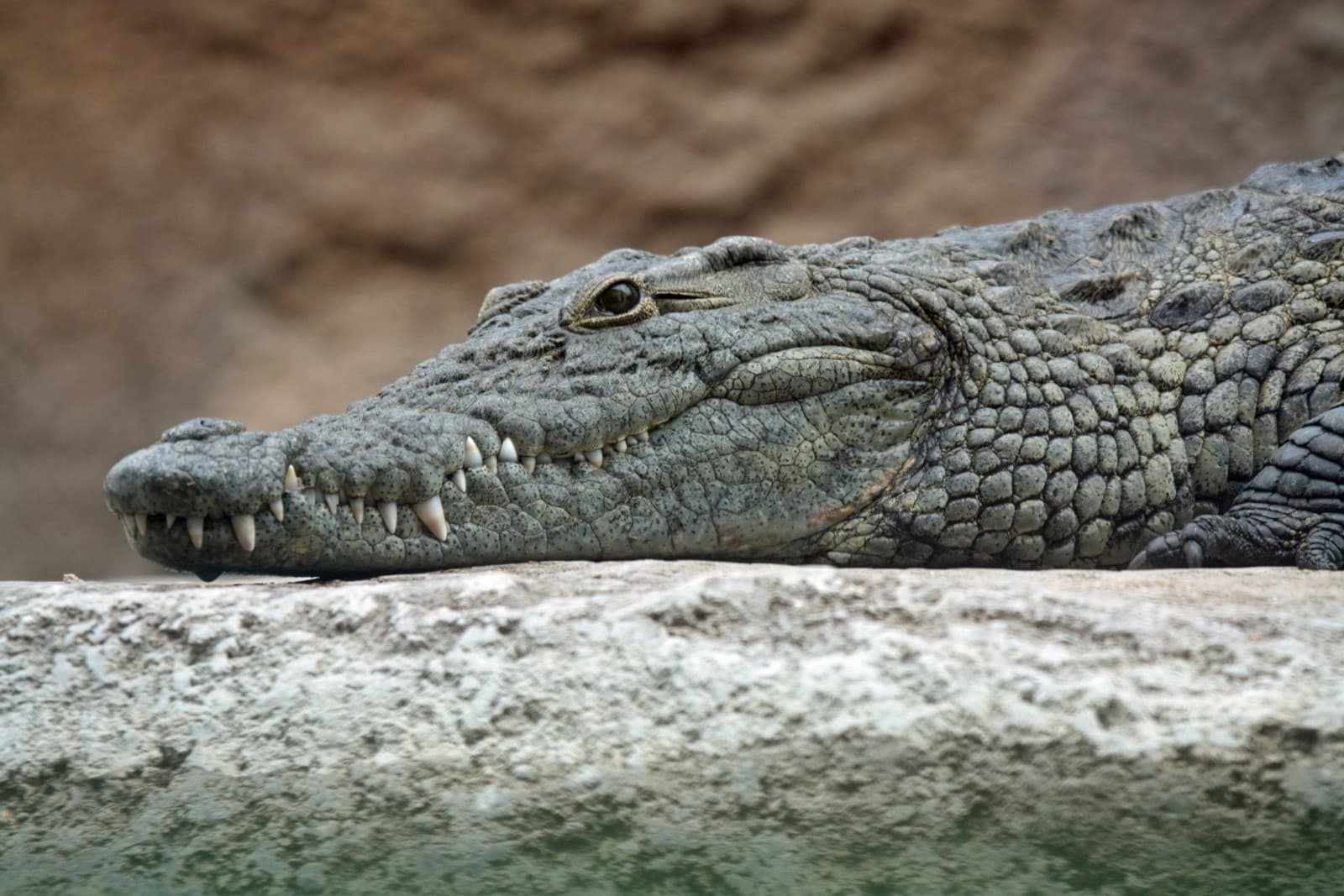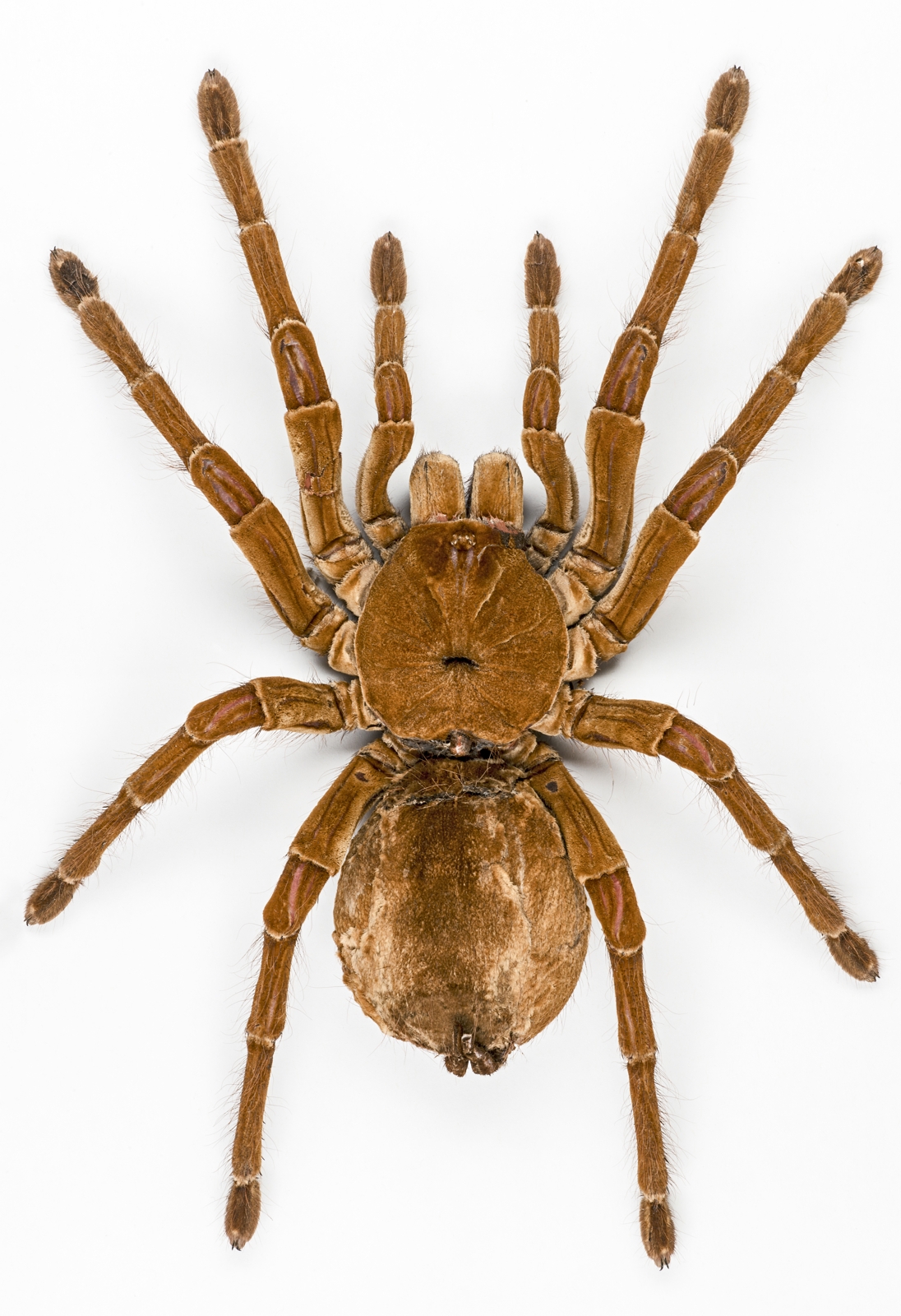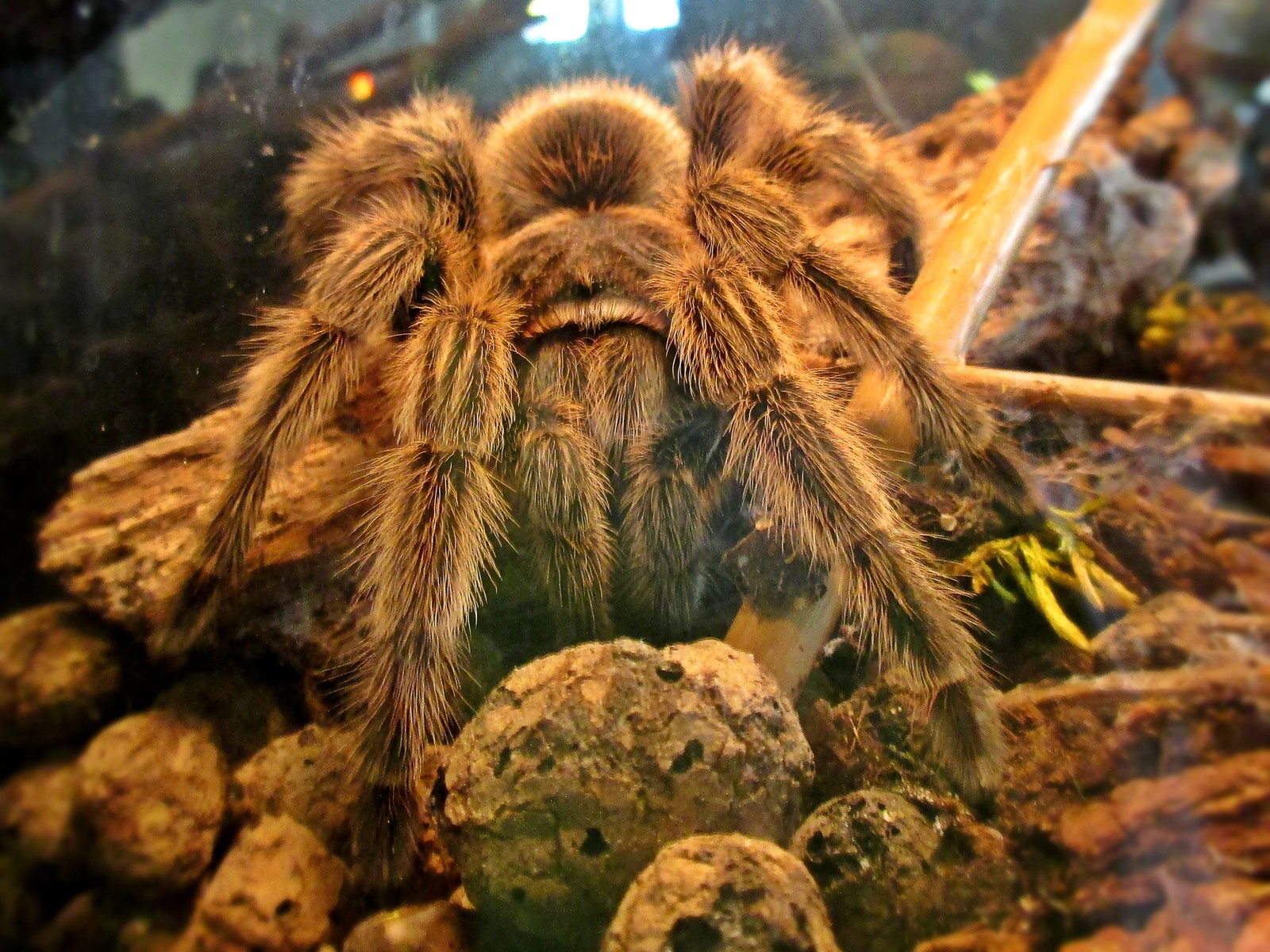Giraffe vs Okapi: A Complete Comparison
While giraffes and okapis share a fascinating family connection as the only living members of the Giraffidae family, these remarkable creatures couldn’t be more different in their appearance and lifestyle. The towering giraffe, reaching heights of up to 18 feet (5.5 meters), stands in stark contrast to its shorter forest-dwelling cousin, the okapi, which typically measures just 5-6 feet (1.5-1.8 meters) at the shoulder.
These distinctive African mammals showcase evolution’s incredible diversity, with the giraffe adapting to life in open savannas while the secretive okapi evolved to thrive in the dense rainforests of the Democratic Republic of Congo. Their divergent evolutionary paths have led to fascinating differences in everything from their markings to their social behavior.
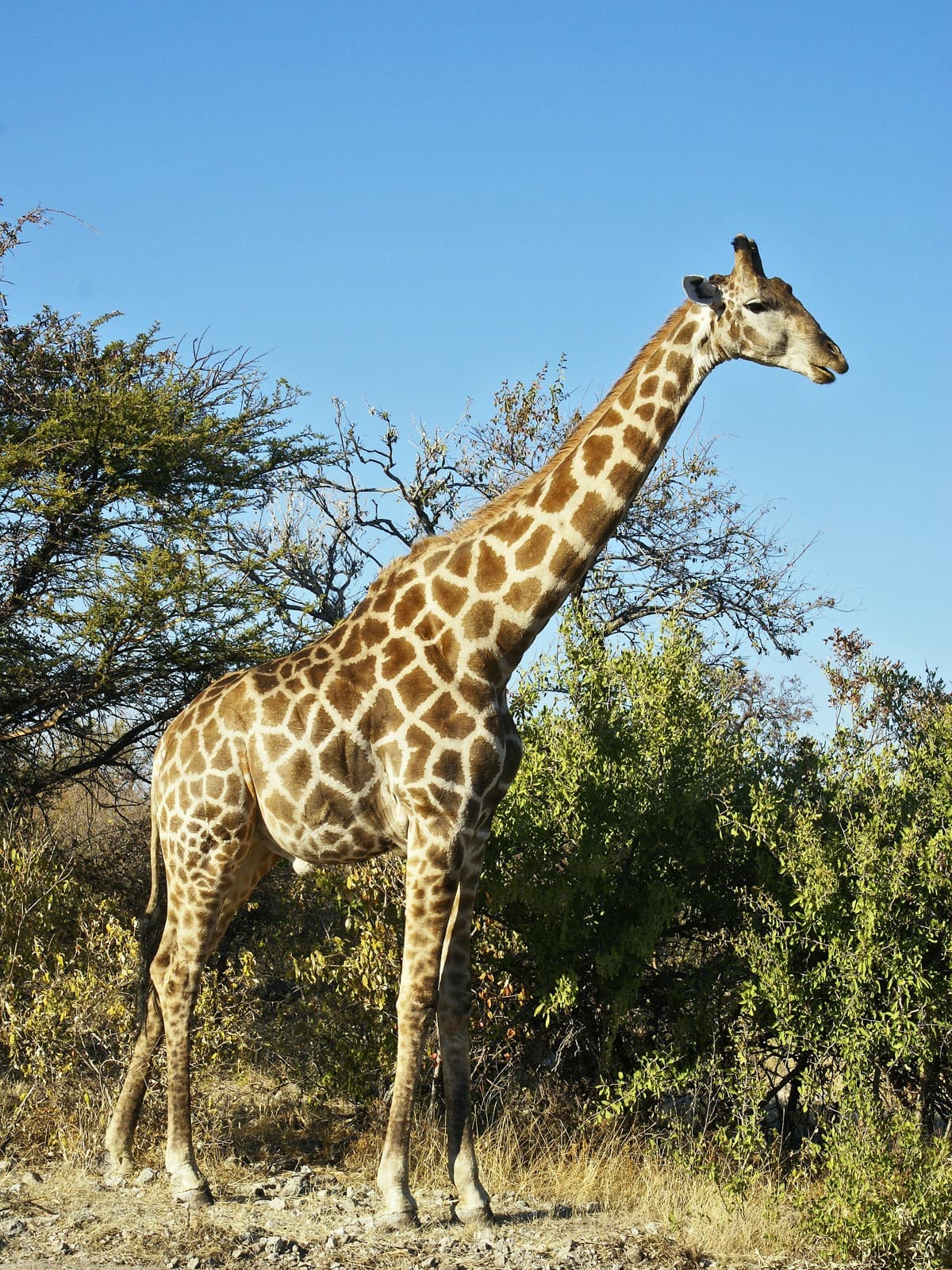
© Hans Hillewaert / CC BY-SA 4.0
The giraffe’s iconic patchwork pattern serves as natural camouflage in the dappled light of the African savanna, while its remarkable height allows it to reach food sources unavailable to other herbivores.
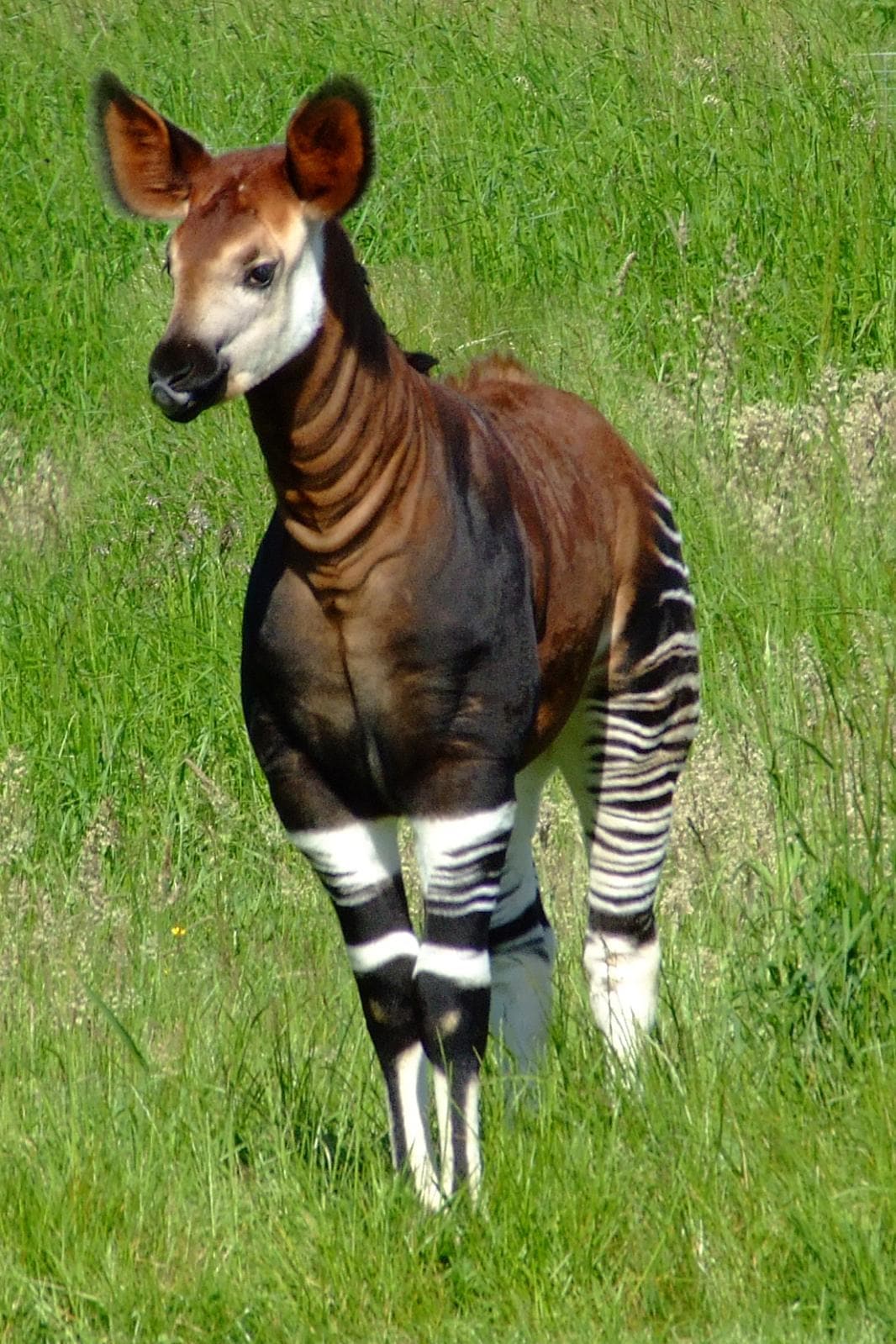
© Charles Miller / CC BY 2.0
The okapi’s striking zebra-like striping on its legs provides perfect camouflage in the filtered sunlight of its rainforest habitat, while its shorter neck is ideally suited for browsing in dense vegetation.
Key Physical and Behavioral Differences
| Feature | Giraffe | Okapi |
|---|---|---|
| Height | 14-18 feet (4.3-5.5 m) | 5-6 feet (1.5-1.8 m) |
| Weight | 1,750-2,800 lbs (794-1,270 kg) | 440-770 lbs (200-350 kg) |
| Habitat | Open savannas and woodlands | Dense rainforest |
| Social Structure | Social groups of 10-20 individuals | Solitary or in pairs |
| Markings | Geometric patches | Striped legs, solid body |
| Neck Length | 6-8 feet (1.8-2.4 m) | 2-3 feet (0.6-0.9 m) |
Habitat and Distribution
Giraffes range across various African savannas and woodlands, from Chad to South Africa, adapting to different ecological zones. In contrast, okapis are endemic to the Ituri Rainforest in the Democratic Republic of Congo, demonstrating remarkable habitat specificity. This stark difference in habitat preference has led to distinct adaptations in both species.
Dietary Adaptations
The giraffe’s extraordinary height allows it to feed on acacia leaves and other vegetation up to 20 feet (6 meters) high, avoiding competition with other herbivores. Okapis, meanwhile, use their relatively shorter necks and long tongues to select specific leaves and buds in the understory of their rainforest habitat, typically feeding at heights of 3-6 feet (1-2 meters).
Conservation Status and Threats
Giraffe Conservation
- Population: Approximately 117,000 individuals
- IUCN Status: Vulnerable
- Main threats: Habitat loss, fragmentation, poaching
Okapi Conservation
- Population: 10,000-50,000 individuals
- IUCN Status: Endangered
- Main threats: Mining, human settlement expansion, poaching
Who Would Win in a Confrontation?
While both species are generally peaceful, in a theoretical confrontation, a giraffe would likely prevail due to several advantages:
- Significantly larger size and weight
- Powerful kicks capable of killing lions
- Greater visual range due to height
- More experience with predator confrontations
However, such encounters would never occur naturally due to their completely separate habitats and ranges.
Evolutionary Relationship
Despite their apparent differences, genetic studies confirm that giraffes and okapis shared a common ancestor approximately 11-12 million years ago. Their divergent evolution showcases nature’s remarkable ability to adapt species to specific ecological niches, resulting in two uniquely specialized mammals that continue to captivate scientists and nature enthusiasts alike.
